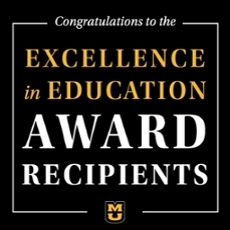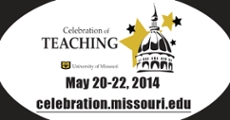As the University of Missouri enters into its 175th year as a global leader in teaching and research, MU Extension will celebrate the 100th anniversary of the Smith-Lever Act of 1914, which established the Cooperative Extension Service, allowing universities to extend their services outside the classroom to citizens across the nation.
Festivities are 10:30 a.m. to 2 p.m. on the Carnahan Quad May 1 and will feature booth displays, food, games from 1914 such as marbles and hopscotch, and Marching Mini-Mizzou. At noon, Chancellor R. Bowen Loftin and Michael Ouart, MU Extension vice provost and director, will speak.
Every year, MU Extension serves more than 1 million Missourians through programs in agriculture, community development, human environmental sciences, business development, youth development and continuing education.
“The first 100 years has set the foundation for the next 100 years,” said Jay Chism, regional director for the southwest region. “With our leadership that we have here on campus and with the grassroots connections that we have in the counties, there is no end to what we can do.”
Building a Foundation
Since its establishment as the first public higher education institution west of the Mississippi in 1839, MU has disseminated knowledge across the state.
The Morrill Act of 1862 led to MU’s status as a land-grant university in 1870, creating the College of Agriculture and Mechanic Arts (now the College of Agriculture, Food and Natural Resources) and widening the opportunity for a university education to all citizens.
Under the Hatch Act of 1887, the Agricultural Experiment Station opened on Sanborn Field in 1888, and researchers were encouraged to communicate their findings to farmers around the state.
Today, the College of Agriculture, Food and Natural Resources operates 22 experiment stations, including farms, centers and forests, across the stage to target its research efforts to benefit all Missourians.
After seeing the successes of the experiment stations across the country, Congress signed in 1914 the Smith-Lever Act, which provided funding and structure to land-grant universities to deliver programs in local communities.
“It formalized nonformal education,” Ouart said. “Noncredit educational programs that are out of the classroom, out on the farms and in the communities. That’s a big part of what makes a land-grant university.”
Evolving Programs for Changing Needs
During extension’s early years, most programs focused on the farmers and their families. Missouri extension agents showed farmers university-tested hog management practices and the evidence-based benefits of silos.
Women were taught to eliminate roosters from flocks because unfertilized eggs sold for more money. Participants in 4-H learned how to grow tomato plants and maximize corn yields. Extension home economists organized local volunteers to cook and deliver meals to rural schools for children who weren’t getting enough food at home.
In recent decades, as families migrated to the cities — according to the 2010 U.S. Census, 66 percent of Missourians live in urban areas — extension programs evolved to better serve those populations.
Today, extension’s fastest-growing offerings are its nutrition education and healthy eating programs.
Nutrition program associates travel to classrooms and community centers to do food tastings, exposing youth to foods they’ve never eaten before and getting them excited about trying new things.
Extension specialists also work in urban areas to increase access to more healthful foods.
Another focus area for MU Extension is starting new businesses and creating new jobs. Home to the Business Development Program, extension helped Missouri entrepreneurs start 192 new businesses in 2013, generated $2.5 billion in economic impact, and created or retained nearly 33,000 jobs from 2010 to 2013.
The Joplin tornado response is a good example of how extension affects the lives of Missourians.
“Through the fire-and-rescue training, we had trained a lot of those community emergency management folks,” Chism said. “If people’s power went out and they didn’t know how long the food in the freezer would be safe for, our nutrition specialist was able to answer those kinds of questions.
“Family financial people helped people get back on their feet. Our business development people were meeting with businesses that had lost everything,” he continued. “We were bringing all the resources together that we have to really help people in a tough situation.”
Meanwhile, the 4-H Center for Youth Development continues to reach 282,000 youth ages 5 to 18 each year. In addition to traditional programs such as livestock judging, there is a 4-H film festival, an aerospace camp and a LEGO engineering workshop.
It’s MU Extension’s breadth of programming that keeps its mission relevant 100 years later, Ouart said.
Celebrating the Past, Focusing on the Future
As extension moves into its next century, Ouart, who has more than 35 years of experience in extension offices across the nation, is changing things up, starting with how specialists tackle complex issues. The future isn’t in silo-based programs, Ouart said. It’s in program integration.
Rolling out this year are five theme areas that encourage collaboration and an interdisciplinary approach among specialists: educational attainment; environmental concerns; community, economic, business and workforce development; global food systems; and health systems.
For example, the viticulture program is both agriculture-based (best practices for Missouri soils and climate, development of disease-resistant grape varieties) and business-based (wine production and distribution).
“Those five areas are where I think we’re going to see growth, and those don’t fit the named programs we have,” Ouart said. “They don’t fit agriculture because it’s agriculture, nutrition and business development.”
If it sounds similar to Mizzou Advantage, it should. Part of MU Extension’s strategic plan is to support that program.
“They’re not similar by chance,” Ouart said.
The goal of program integration is to increase extension’s capacity to address complex issues that affect Missouri citizens.
To keep abreast on what those issues are, extension continues to rely on county extension councils in each of the 114 counties to help understand the needs of the community.
“We go after that grassroots information,” Chism said. “We try to really figure out what the needs are in that county, and then we tailor our programming to that.”
It all goes back to the heart of the Smith-Lever Act: Education for all. Extension’s mission in 1914 and in 2014 is to bring research-based information from MU to Missourians.
“We’re the conduit that keeps that pipeline going,” Chism said.
— Kelsey Allen



